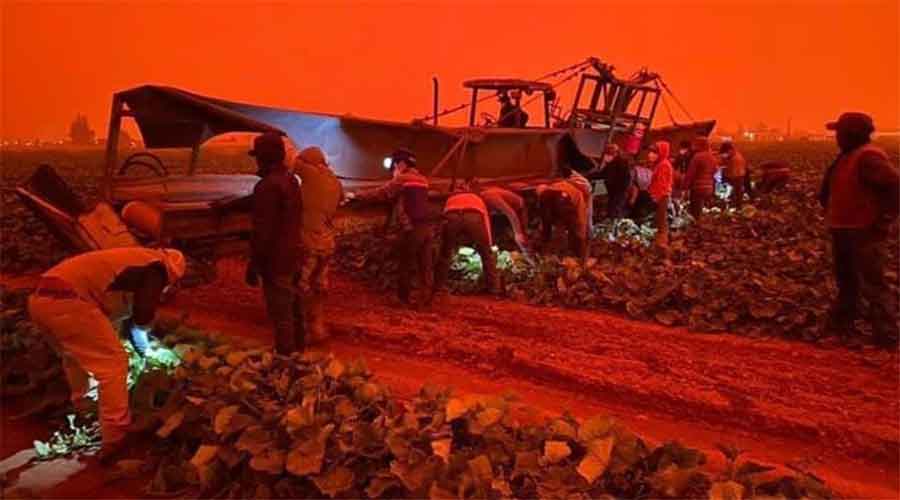The fast-moving fires that swept through western US have wiped out critical populations of endangered species and incinerated native habitats that may take years to recover, if they recover at all.
Fire is a critical part of ecosystems in the west, and many plants and animals depend on it to thrive, but the heat and intensity of the wildfires now ravaging California, Oregon, Washington and other western states are so destructive that wildlife in some areas may struggle to recover.
“Some of these places we set aside may be fundamentally impacted by climate change and may not be able to come back,” said Amy Windrope, deputy director of Washington’s department of fish and wildlife. “That’s just a reality.”
With millions of acres across the west blackened by fire, the impact on humans has been clear: Lives lost, tens of thousands of people forced to flee their homes, possessions and livelihoods destroyed, and state and federal fire fighting resources have been stretched beyond the limit.
Residents are even beginning to question whether the changing fire danger will make their hometowns too dangerous to inhabit. Less obvious is the long-term impact to native species.
Wildlife officials all over the west are grappling with how to respond now that the existence of habitats set aside for threatened species appear to be imperilled by megafires made worse by climate change.
“It’s important to make the connection between what’s happening now and climate change,” said Davia Palmeri, policy coordinator for the Oregon department of fish and wildlife. “We now have to think about climate change when managing wildlife.”
Fire that raced through the sagebrush steppe country of central Washington this month destroyed several state wildlife areas, leaving little more than bare ground. The flames killed about half of the state’s endangered population of pygmy rabbits, leaving only about 50 of the palm-sized rabbits in the wild there.
“It’s just heartbreaking,” Windrope said. “We have very little sage brush habitat left for them, and it will take decades for this land to recover.”
The fires also destroyed critical breeding grounds for endangered sage grouse and sharp-tailed grouse, and officials estimate the fast-moving flames may have wiped out 30 to 70 per cent of the birds. The survivors are left without the critical brush cover they need to raise young.
Fire is common in central Oregon, but the intensity of the fires this month has not been seen in generations, said Molly Linville, whose family has ranched in Douglas County, Washington, for nearly a century.
Ranchers in the area were unable to get cattle out of the way and many died. On the range they found deer and other wildlife staggering around, severely burned.
“One neighbour girl found a porcupine who had all his quills burned off. It took the longest time to even figure out what it was,” she said. “They took it in and I think it’s going to be OK, but the land — it’s going to take years to come back.”
In Oregon, the fires have largely raged in western pine forests, prompting different concerns.
Several endangered and threatened species, including the northern spotted owl and the weasel-like pine marten, depend on the mature mountain forests that bore the brunt of the fires.
“It’s too soon to tell the impact,” Palmeri said. Birds can fly out of harm’s way, animals can seek refuge underground, but some wildlife may return to find the old-growth forests they rely on gone.
The impact of hundreds of thousands of acres of barren slopes may spread well
beyond the fires’ reach and remain once the flames are out. The Oregon department of fish and wildlife is bracing for winter rains that could wash ash and silt into local streams and impact endangered salmon.











